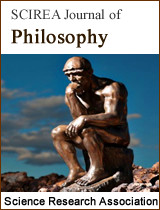To the justification of the Super-strong Anthropic Principle
DOI: 10.54647/philosophy72069 85 Downloads 93838 Views
Author(s)
Abstract
Empirical data in situ of recent years indicate that spacetime does not exist physically: they are not material - they do not have any of the characteristics inherent in material objects. At the same time, space-time is the most fundamental and universal mediator between all, without exception, material objects of Nature. In turn, material objects of Nature make up two ensembles of objects that form one Great, stationary (not evolving) and an infinite number of non-stationary (evolving) Small Universes inhabiting it - galaxies and clusters of galaxies. The Great Universe is a system open in an infinite space-time continuum, functioning according to single algorithms - intermediaries of 2,3,4, etc. of order (physical, chemical, biological, social laws and principles). All types of interactions between material objects, including gravitational, electromagnetic, nuclear, chemical, organic, etc., are local in nature, the transmission rate of their "signals" is limited. All relativistic effects also fall into the category of near-interactions. The long-range "phenomena of unlimited scale" include only non-material entities that do not need material carriers, but themselves determine the nature of their interactions: fundamental and particular laws, world constants and prohibitions (the speed of light, the temperature of absolute zero, etc. Pauli's principle, etc.), as well as human imagination capable of "staying" everywhere and at any time. But as space-time serves as a universal mediator between all of Nature's material objects, so too is a human-like mind called to mediate between the fading star systems of the Small Universes and their "heirs."
Keywords
space, time, matter, evolution, Great Universe, Small Universes, anthropic principle
Cite this paper
Givishvili G.,
To the justification of the Super-strong Anthropic Principle
, SCIREA Journal of Philosophy.
Volume 2, Issue 1, February 2022 | PP. 39-55.
10.54647/philosophy72069
References
| [ 1 ] | C. Marinoni and A. Buzzi. https://www.liveinternet.ru/users/3473355/post142170848/2010. |
| [ 2 ] | E. Di Valentino, A. Melchiorri & J. Silk. Planck evidence for a closed Universe and a possible crisis for cosmology // Nature Astronomy. 2020. V 4. P. 196–203. |
| [ 3 ] | P. Laurent, D. Götz, P. Binétruy, S. Covino, and A. Fernandez-Soto. Constraints of Lorentz Invariance Violation using integral/IBIS observations of GRB041219A//Phys. Rev. D 83, 121301(R), 2011. |
| [ 4 ] | Carter B. Cosmology. Theory and observations. M. 1978 p.369-372. (in Russian) |
| [ 5 ] | G. Givishvili//Does natural science have an alternative to God? VF, № 2. 1995. (in Russian) |
| [ 6 ] | G. Givishvili//Dark energy and "super-strong anthropic principle. VF. №5. 2008. (in Russian) |
| [ 7 ] | G. Givishvili. Dialectics of humanism. Bohr's logic vs Aristotle's logic. M. 2017. (in Russian) |
| [ 8 ] | A. D. Linde. Inflating Universe//UFN, 1984. (in Russian) |
| [ 9 ] | S. Hawking. A brief history of time. 2000. |
| [ 10 ] | A. Einstein. Ernst Mach. Physikalische Zeitschrift, 17, 101-104. 1916. |
| [ 11 ] | A. Einstein. Ather und Relativitätstheory. Verlag von Julius Springer, Berlin, 1920. |
| [ 12 ] | https://ru.wikipedia.org/wiki. Hubble Edwin |
| [ 13 ] | Ya. Zeldovich, I. Novikov. The structure and evolution of the universe. M. 195 g. (in Russian) |
| [ 14 ] | Gregory Laughlin, Peter Bodenheimer, Fred C. Adams. The End of the Main Sequence // The Astrophysical Journal. — Bristol: IOP Publishing, 1997. — 1 June (vol. 482). |
| [ 15 ] | Bertulani C. A. Nuclei in the Cosmos. — Singapore: World Scientific, 2013. — ISBN 978-981- 4417-66-2. |
| [ 16 ] | David Darling. Main sequence. Encyclopedia of Science. |
| [ 17 ] | Mironova I. Main sequence. http://www.astronet.ru/db/msg/1170638/evolution/hr_diagram/ms.htm |
| [ 18 ] | K. Lang. Astrophysical formulas. P.2. M. 1978. |

